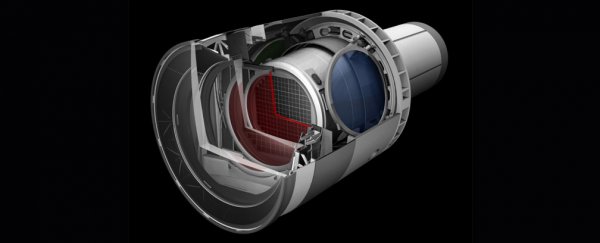Gadget lovers the world over are primed to see what kind of camera Apple unveils next week for the iPhone 6s – but believe us when we tell you, it won't have anything on this.
The US Department of Energy gave the green light this week for construction to begin on what will soon be the world's most powerful digital camera. Once completed, the camera will act as the 'eye' of the Large Synoptic Survey Telescope (LSST) in Chile, routinely capturing images at a whopping 3.2 gigapixels.
So what's a gigapixel? Metric aficionados will already know that giga signifies a billion, or a thousand times a million (aka mega). In other words, a 1-gigapixel camera would capture 1,000 times as much information as 1-megapixel camera. Since the LSST's lens is capable of recording 3.2 gigapixels, let's just say the scientific consensus is that this is a pretty sweet camera.
When it starts functioning in 2022, the LSST will take pictures of the night sky from the top of Chile's Cerro Pachón mountain, perceiving and recording the most advanced survey of the stars above in human history. In its anticipated 10-year timeframe, the LSST will capture tens of billions of celestial objects, giving us a high-resolution map of the Universe the likes of which we've never seen before.
If 'survey' sounds a little dry, guess again. The LSST will serve up some of the most enticing space imagery you could imagine, with researchers saying the camera will record the formation of galaxies, monitor potentially hazardous asteroids and near-earth objects, and observe exploding stars.
Different kinds of filters will let the camera view different wavelengths of light – from near-ultraviolet to near-infrared wavelengths – and will help scientists to better understand things like dark matter and dark energy, which make up 95 percent of the known Universe.
The images captured by the LSST's camera will be so high resolution that it would take 1,500 high-definition TVs to display just one. Of course, such a gargantuan image sensor also requires a hefty body. When it's built, which is expected to take about five years now that the SLAC National Accelerator Laboratory has been given the go-ahead, the LSST camera will be the size of a car and will weigh over 2.7 metric tonnes.
Data storage requirements will be almost as hefty as the camera's physical bulk. The LSST will chew through chew through approximately 6 million gigabytes per year, which the researchers point out is "the equivalent of shooting roughly 800,000 images with a regular 8-megapixel digital camera every night, albeit of much higher quality and scientific value".
